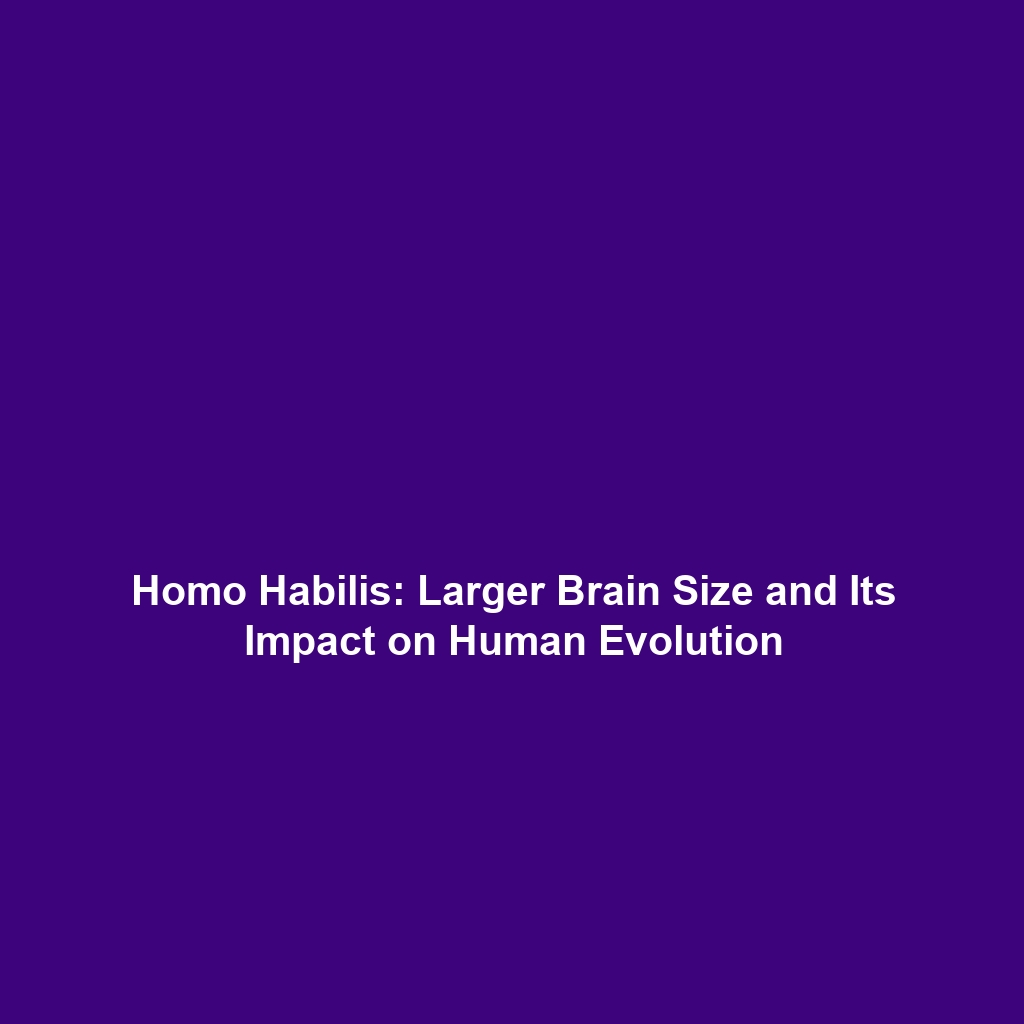Homo habilis: A Crucial Chapter in Human Evolution
Introduction
Homo habilis represents a significant milestone in the evolutionary lineage of humans. Dated to approximately 2.4 to 1.4 million years ago, this early hominid species is often regarded as one of the first members of the genus Homo. Its discovery has paved the way for greater understanding of human evolution, showcasing the advancements in tool-making and cognitive abilities. In the study of human evolution, Homo habilis is pivotal as it highlights the transition from early hominids to more sophisticated bipeds, indicating an evolutionary shift that would shape the future of our species.
Key Concepts
Physical Characteristics
Homo habilis is characterized by a smaller physique compared to modern humans, with a larger cranial capacity than earlier hominids, averaging around 510 to 600 cubic centimeters. This increase in brain size is significant for understanding the evolution of human cognitive functions. Its facial features included a prominent brow ridge and smaller teeth, which suggest dietary shifts and social behavior changes.
Tool Use and Cultural Context
This species is credited with the creation of simple stone tools, classified as Oldowan tools, marking a substantial advancement in human ingenuity. Homo habilis’ ability to use tools for problem-solving and resource gathering positions it as an evolutionary link between earlier and later hominids, particularly in the evolutionary narrative leading to Homo erectus and, eventually, Homo sapiens.
Applications and Real-World Uses
Understanding Homo habilis is essential for various applications in the field of human evolution and related disciplines:
- Insights into early human behavior and social structure.
- Adaptive survival tactics employed by Homo habilis that inform modern environmental and anthropological studies.
- Applications of fossil analysis to improve archaeological techniques for better understanding past cultures.
Current Challenges
The study of Homo habilis presents several challenges, including:
- Challenges of Limited Fossil Record: The fossil evidence is somewhat limited, making it difficult to draw definitive conclusions about its behavior and lifestyle.
- Issues in Taxonomy: Disagreements among paleontologists regarding classification complicate the understanding of its place in human evolution.
- Dating Accuracy: The approximation of dates for fossils can lead to inconsistencies in the timeline of human evolution.
Future Research and Innovations
Future research on Homo habilis will likely leverage advanced technologies such as:
- 3D imaging and modeling to reconstruct physical characteristics more accurately.
- DNA analysis from fossil remains when feasible to glean genetic information.
- Enhanced dating techniques to provide more precise timelines in the evolutionary narrative.
Conclusion
In conclusion, homo habilis plays a crucial role in the understanding of human evolution. By examining its physical traits, tool-making abilities, and cultural significance, researchers can gain insights into the path that led to modern humans. Continued research and emerging technologies hold the potential to unravel further mysteries about this fascinating species. For those interested in the journey of human evolution, further reading on Homo erectus and Neanderthals can provide valuable context and deeper understanding.

